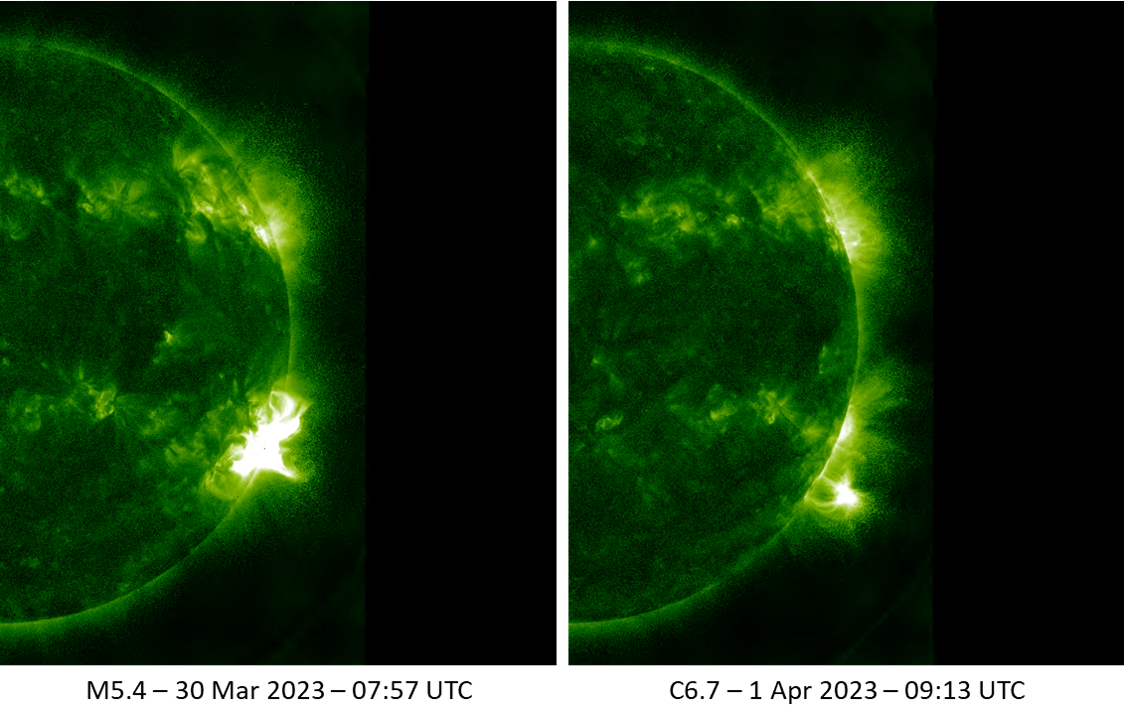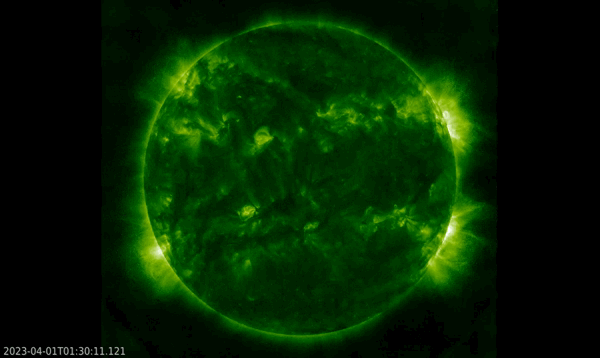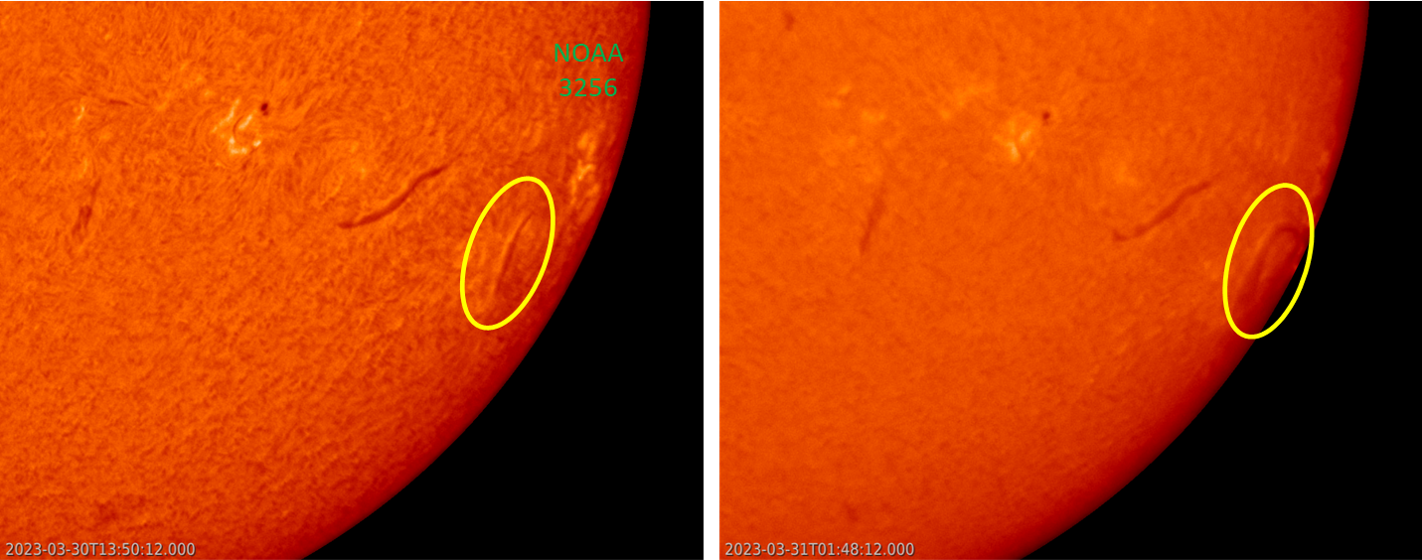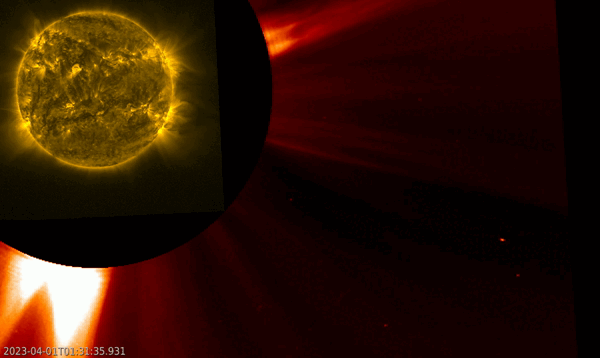While decaying, the trailing portion of active region NOAA 3256 regained some flaring potential eventually producing an X1 flare near the southwest solar limb on 29 March. The eruption was extensively discussed in this STCE newsflash.Flaring activity by NOAA 3256 continued with two additional M1 flares on the same day, and an M5.4 flare on 30 March. The latter flare peaked at 07:37 UTC (GOES) and was accompanied by a brief and small enhancement of the greater than 10 MeV proton flux, reaching a modest peak of 0.6 pfu at 10:15 UTC from its typical background value near 0.25 pfu, thus remaining well below the alert threshold of 10 pfu (GOES). The trailing portion of NOAA 3256 was spotless late on 31 March just before rounding the solar limb.

The extreme ultraviolet (EUV) imagery above (left) was made by SDO/AIA 094 and shows the M5 flare at 07:57 UTC, shortly after its peak in soft x-ray (clip). The top right image is not related to this flare or active region NOAA 3256. It was taken at 09:13 UTC on 1 April, a few hours after the associated C6.7 flare peaked at 03:28 UTC. A clip of this event can be found underneath. This was a long duration event (LDE) starting at 02:49 UTC and ending at 04:31 UTC.

The source of this flare was the eruption of a small filament trailing NOAA 3256. This can be seen in the annotated H-alpha imagery underneath (GONG). Solar filaments are clouds of charged particles ("plasma") above the solar surface squeezed between magnetic regions of opposite polarity. Being cooler and denser than the plasma underneath and their surroundings, they appear as dark lines when seen on the solar disk and as bright blobs when seen near the solar limb (then they are called "prominences"). Special filters are required to observe these features, and one such a filter is the Hydrogen-alpha line in the red part of the solar spectrum (H-alpha; 656,3 nm).

Apparently, this filament became unstable early on 1 April and violently erupted. This can be seen in the imagery underneath, combining AIA171 (yellowish) with AIA131 imagery, the latter allowing a better contrast between the cold (dark purple) and hot (sky blue) areas of the eruption. It shows very well the ejection of the "dark" filament, followed by the development of a series of post-eruption coronal loops ("arcade"). Because of the location (almost at the solar limb) and the height of the filament, the event was visible in H-alpha as a prominence eruption.

Interestingly, AIA 094 images showing the hottest parts of the flare suggest the presence of supra-arcade downflows (SAD). These features have been discussed in detail in this STCE newsitem, providing also many more examples of SADs. The clip underneath (annotated image) shows some dark downflows (AIA 094 - green) towards the top of the coronal loops (AIA 171 - red).

No surprize that a coronal mass ejection (CME) was associated with this eruption. The imagery underneath combines the wide-field PROBA2/SWAP EUV images (temperature near 1 million degrees) with the white light coronagraphic images from SOHO/LASCO C2. This CME had a plane-of-the-sky speed of around 1000 km/s but no earth-directed component.






